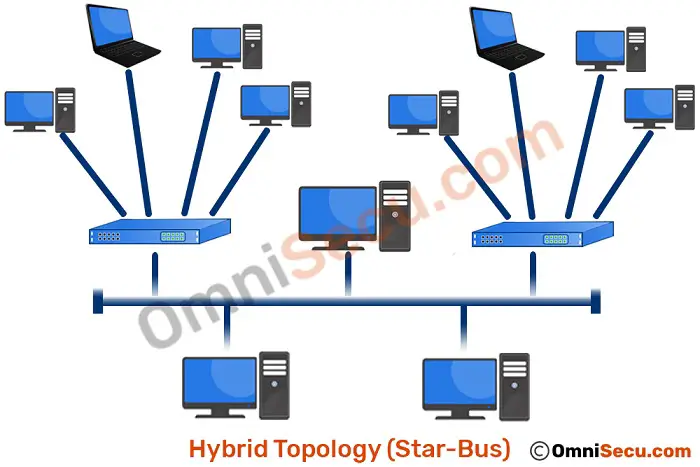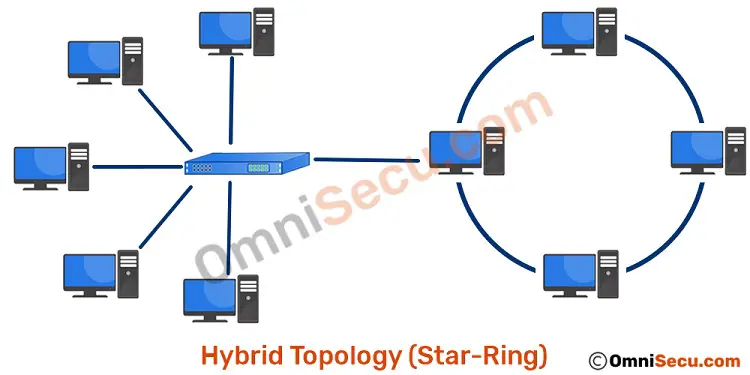Hybrid Topology
Hybrid topology is a type of network topology, which is made of two or more different topologies.
A hybrid network topology can be made of different network topologies. Hybrid topologies are often made using combination of bus topology, star topology, mesh topology (full-mesh topology or partial-mesh topology), ring topology or wireless topology as per the requirement of the organization.
An example of hybrid topology is star-bus topology. Below image shows a star-bus hybrid network topology.

Another example of hybrid topology is star-ring topology. Below image shows a star-ring hybrid network topology.
